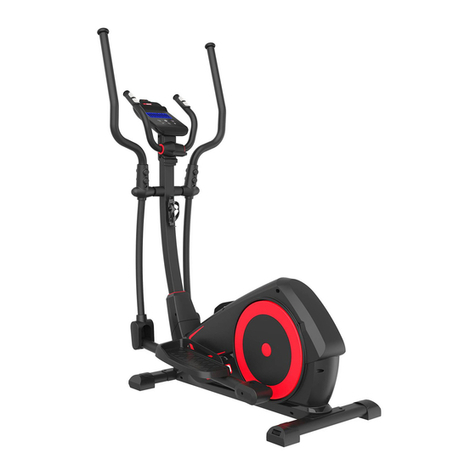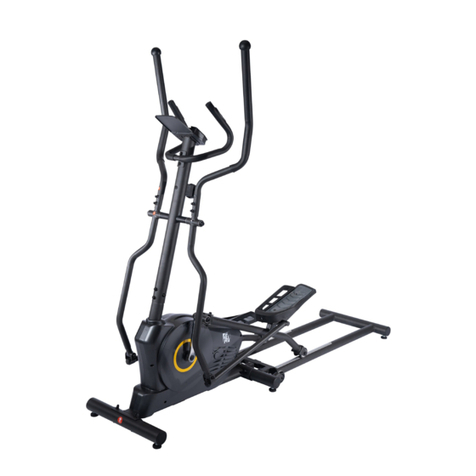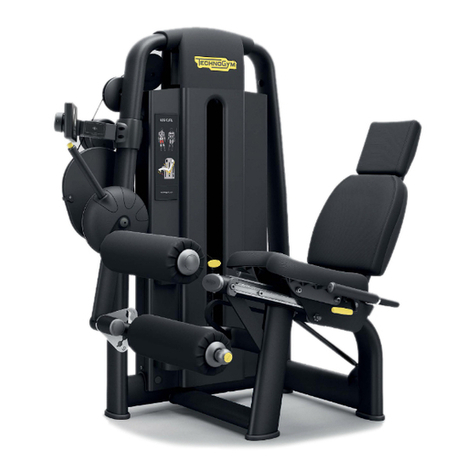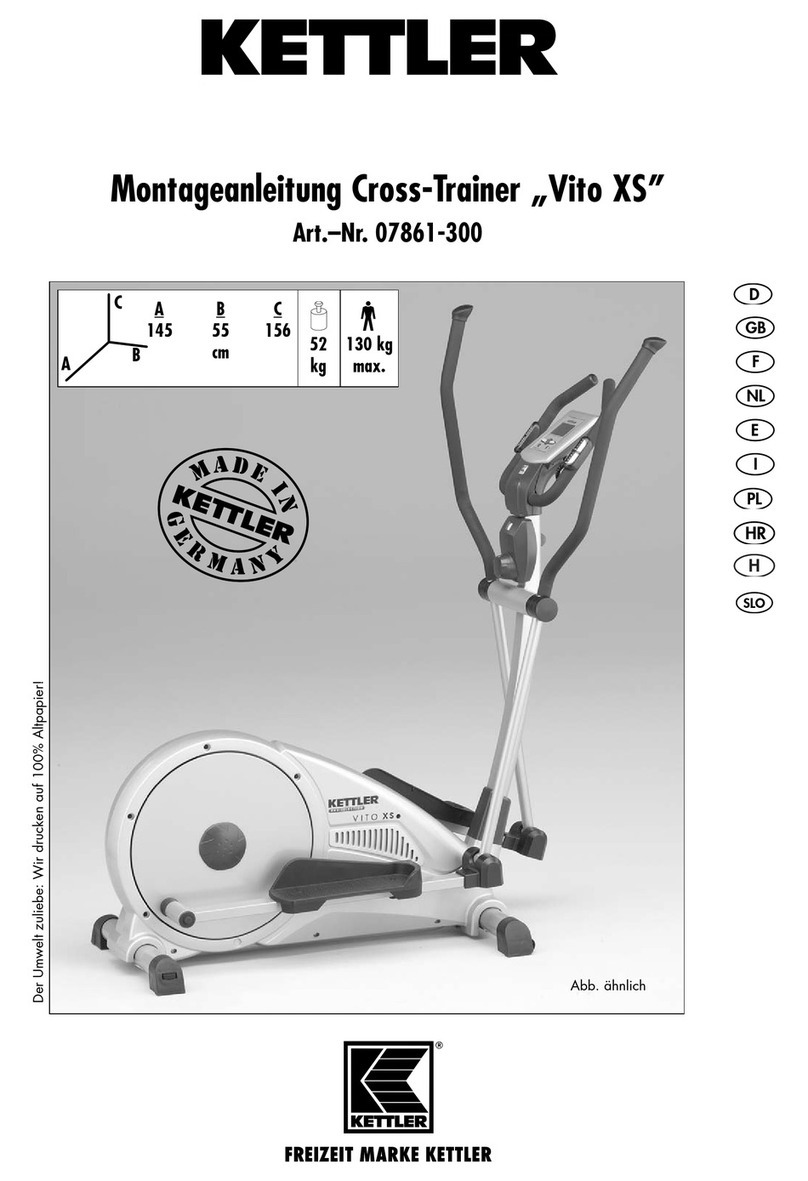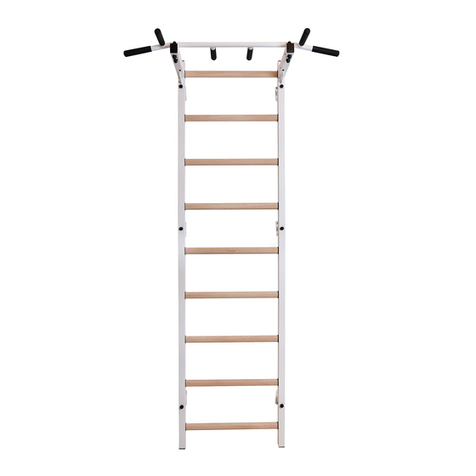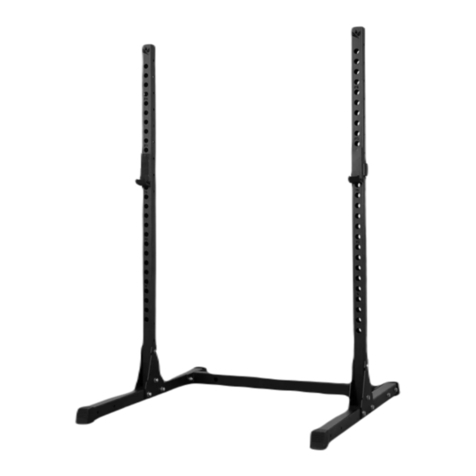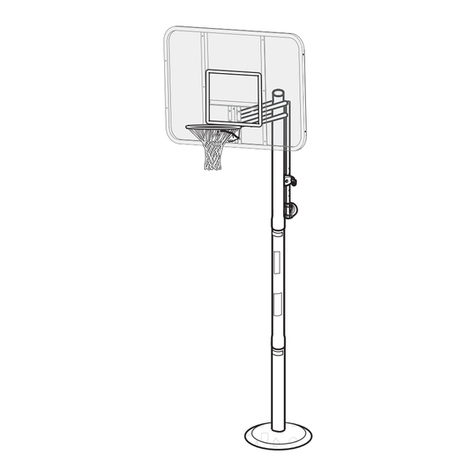Rockwell AXLES Operation manual

OPERATION
SERVICE MANUAL
FOR
AXLES
MADE
IN
USA

A leading manufacturer and distributor of trailer parts and accessories.
Rockwell American Products
Manufacturing & Home Offices
AXLE MFG PLANT
1012 Industrial Drive
Royse City, TX 75189
Phone: (972) 635-2464 • Phone: (800) 334-6355
Fax: (972) 635-2049
FENDER MFG PLANT
633 NW Parkway
Azle, TX 76020
Phone: (817) 444-1161
Fax: (888) 669-4965
MFG PLANT
3804 Sydney Road
Plant City, FL 33567
Phone: (813) 659-2948
Phone: (800) 289-2953
Fax: (813) 659-9847
SPRING MFG PLANT
306 West Simonds Road
Seagoville, TX 75159
Phone: (972) 287-7600
Phone: (800) 400-3267
Fax: (972) 287-7633
CORPORATE HEADQUARTERS
604 West Main • Azle, TX 76020
Phone: (800) 243-4883 • (817) 444-4518
Fax: (800) 243-5549 • Fax: (817) 444-4849
Birmingham, AL
Ph: (800) 874-4292
Phoenix, Arizona
Ph: (888) 999-8233
Fresno, California
Ph: (800) 742-6203
Sacramento, California
Ph: (800) 321-6362
Aurora, Colorado
Ph: (800) 307-5944
Plant City, FL
Ph: (800) 289-2953
Angola, IN
Ph: (877) 730-3748
Freeport, Minnesota
Ph: (888) 325-1485
Kansas City, Missouri
Ph: (866) 724-9950
Seminole, Oklahoma
Ph: (866)724-9950
Wilsonville, Oregon
Ph: (800) 914-9116
New Holland, PA
Ph: (800) 497-0986
Rockwell American Branch Offices
Florence, SC
Phone: (800) 238-3903
Azle, Texas
Ph: (800) 242-4882
Mount Pleasant, Texas
Ph: (800) 635-1354
San Antonio, Texas
Ph: (800) 854-8058

Rockwell American Trailer Products
LIMITED WARRANTY
Rockwell American extends to the original purchaser only, a limited
warranty on each Rockwell American tubular axle(s) against de-
fects in material or workmanship for a period of two (2) years from
date of purchase.
Rockwell American extends to the original purchaser only, a limited
warranty on each Rockwell American Equalizer Torsion Axle(s)
against defects in material or workmanship for a periodof five (5)
years from date of purchase.
1. To obtain warranty service, please call or send the following
information to the address listed on the back.
A. Name and mailing address of purchaser.
B. Proof of date of purchase.
C. Name of manufacturer of unit under which axle is mounted.
D. Model, year and serial number of unit.
E. Name and address of dealer from whom unit was purchased.
2. This warranty does not extend to:
A. The connecting of brake wiring to the trailer wiring or trailer
wiring to the towing vehicle wiring.
B. The attachment of the axles to the frame.
C. Hub imbalance, or any damage caused thereby.
D. Parts not supplied by Rockwell American.
E. Any damage whatever if caused by or related to any
alteration of the axle.
F. Use of axle assembly on unit other that that to which it
was originally mounted.
G. Normal wear including brake linings and magnets.
3. This warranty does not cover defects caused by:
A. Improper installation.
B. Damage (not resulting from defect or malfunction) while in
the possession of the customer.
C. Unreasonable use (including failure to provide reasonable
and necessary maintenance.
4. Repair or replacement under this warranty is the exclusive remedy
for the customer. Rockwell American shall not be liable for any
incidental or consequential damages, including any towing fees,
hotel bills, telephone calls and meals for breach of any express or
implied warranty on the axles.

FOR ASSISTANCE, CONTACT OUR WARRANTY DEPARTMENT
ROCKWALL AMERICAN
1012 Industrial Drive
Royse City, TX 75189
(800)334-6355
A leading manufacturer and distributor of trailer parts and accessories.
MADE
IN
USA

SOUTH CAROLINA
Hwy 76 (Palmetto Indust. Park)
Timmonsville, SC 29161
Phone: (843) 346-4827
Phone: (800) 238-3903
Fax: (813) 659-9847
Fax: (800) 207-4770
TEXAS
604 W. Main Street
Azle, TX. 76020
Phone: (817) 444-1341
Phone: (800) 242-4882
Fax: (817) 444-4849
Fax: (800) 889-1435
TEXAS
609 East 16th
Mt. Pleasant, TX 75455
Phone: (903) 572-7932
Phone: (800) 635-1354
Fax: (903) 572-7268
Fax (800) 301-7943
TEXAS
5014 Callahan Rd.
San Antonio, TX 78228
Phone: (210) 431-0166
Phone: (800) 854-8058
Fax: (210) 431-0188
Fax: (800) 343-1895
COLORADO
14600 E. 35th Place Unit F
Aurora, CO 80011
Phone: (303) 307-4700
Phone: (800) 307-5944
Fax: (303) 307-4774
MINNESOTA
208 7th Street SW Box 235
Freeport MN 56331
Phone: (320) 836-2550
Phone (888) 325-1485
Fax (320) 836-9550
OKLAHOMA
1801 Ray Davis Blvd.
Seminole, Oklahoma 74868
Phone: (866)724-9950
FAX: (866)724-9956
PENNSYLVANIA
170 Commerce Dr
New Holland, PA 17557
Phone: (717) 354-7070
Phone: (800) 497-0986
Fax: (717) 354-7076
CALIFORNIA
3701 Parkway Place
W. Sacramento, CA 95691
Phone: (916) 371-6792
Phone: (800) 321-6362
Fax: (916) 371-0228
FLORIDA
3804 Sydney Rd.
Plant City, FL 33566
Phone: (800) 289-2953
Phone: (813) 659-2948
Fax: (813) 659-9847
MISSOURI
519 Duck Road
Grandview, MO 64030
Phone: (866) 724-9950
Fax: (866) 724-9956
INDIANA
1304 Wohlert Street
Angola, IN 46703
Phone 260-665-3748
Phone 877-730-3748
Fax 877-730-3748
ARIZONA
2930 W. Osborn Road
Phoenix, AZ 85017
Phone: (602) 271-0031
Phone: (888) 999-8233
Fax: (602) 271-0148
CALIFORNIA
2888 South Orange Avenue
Fresno, CA 93725
Phone: (559) 237-7467
Phone: (800) 742-6203
Fax: (559) 237-1913
ALABAMA
960 Old Grants Mill Rd
Irondale, AL 35210
Phone: (205) 951-2006
Phone: (800) 874-4292
Fax: (800) 655-2944
OREGON
27180 S.W. 95th Ave. Suite 3320
Wilsonville, OR 97070
Phone: (503) 682-0510
Phone: (800) 914-9116
Fax: (503) 682-0520
Warranty
Service
Provided
Through Our
Nationwide
Distribution
Locations
ROCKWELL AMERICAN
SELLING LOCATIONS
Contact Your Local Rockwell American Branch
For More Information
Or visit us online:
www.rockwellamerican.com

TABLE OF CONTENTS
Safety Notice . . . . . . . . . . . . . . . . . . . . . . 1
Brakes . . . . . . . . . . . . . . . . . . . . . . . . 1–2
Electric Brake Maintenance. . . . . . . . . . . . . . . 3
Trailer Connection . . . . . . . . . . . . . . . . . . . 4
Brake Trouble shooting . . . . . . . . . . . . . . . .5-6
Electrical . . . . . . . . . . . . . . . . . . . . . . . 6–7
Hubs, Drums and Bearings . . . . . . . . . . . . . 8–9
Posi-Lube . . . . . . . . . . . . . . . . . . . . . . . 10
Suspension Systems . . . . . . . . . . . . . . . 11–12
Torsion Axles . . . . . . . . . . . . . . . . . . . . . 13
Tire and Wheel Safety . . . . . . . . . . . . . . 14–15
Replacement Parts . . . . . . . . . . . . . . . . . . 16
MADE
IN
USA

1
SAFETY NOTICE
Providing safe dependable operation of your axle(s) and related compo-
nents is important. This manual provides basic procedures for service
and repair using established industry standards. There are many varia-
tions in procedures to repair and maintain the axle and its related parts,
however, it is not possible to provide you with all the detail for various
service procedures. Refer to your trailer manufacturer’s owners manual
for any specific warnings and procedures that may relate to the safety
and maintenance of your trailer. If these procedures are not clear to you
or if you are unsure you should contact a trailer repair facility who has a
trained axle repair technician for advice or repair.
NEW AXLE SETUP AND ADJUSTMENTS
Wheels Re-torque wheel nut torque requirements on new
trailers at 50 miles. See page 16 for torque rates.
Brakes Adjust at 3,000 miles.
Tire Pressure See tire manufacturers recommendations.
Brake Controller Settings Refer to Brake Controller manufacturers
recommendations
BRAKES
Your trailer electric brakes are actuated by an electric magnet which is
modified by an electrical impulse from the brake controller. The trailer
brakes will apply smoothly and slightly ahead of the truck brakes if all the
brake components are installed and connected properly. The brakes are
activated with the electrical impulse from the controller to the magnets
which, when in contact with the armature plate
will apply the pressure to the primary shoe and will engage the secondary
shoe much like hydraulic brakes on a passenger vehicle. As brake pres-
sure (applied by the driver) is increased the electrical flow to the magnets
increases the pressure between the brakes and drums to meet the braking
requirements of the driver.
Safety Notice

2
Electric brakes have been used on a variety of trailers for many years and
offer many benefits to the driver. Please refer to the brake controller infor-
mation provided by the installer of your towing vehicle for procedure and
operation of the controller.
DOUBLE CHECK!
Make sure your controller is installed according to the manufac-•
turer’s recommendations.
Make sure that the proper brake controller adjustments have•
been made to correctly engage the tow vehicle brakes and the
trailer brakes to work together to providing safe and comfortable
braking.
Make sure that the brakes have been properly seated by applying•
the brakes repeatedly and lightly for about 20 to 25 times at a low
speed (under 25 miles per hour) to begin the “seating in” of the
brake to the brake drum components. Do this in a safe and low
traffic area for everyone’s safety.
Right Hand 10” Electric Brake Left Hand 12” Electric Brake
Brakes
Below is a view of the 10” and 12” brakes used on your trailers axle(s),
depending on your trailer and manufacturer’s specifications.

3
Electric Brake Maintenance
ELECTRIC BRAKE MAINTENANCE
Your trailer brakes should be adjusted between 250 to 300 miles after all
of the brake components have seated. Since driving conditions and areas
vary you should re-check brakes adjustments at a minimum of 3,000
miles.
ADJUSTMENT PROCEDURE
Make sure your trailer is on a level surface and is free of any1.
potentially dangerous items.
Jack up the trailer and secure with jack stands. Make sure you are2.
using the trailer manufacturer’s procedure for jacking and safely
supporting the trailer until the tire and wheel are clear of the
ground surface.
Find the adjusting hole cover and remove it from the backing3.
plate.
Use a brake adjusting tool to adjust the star wheel (of the adjuster)4.
and expand the brakes until the brake shoes are sufficiently
expanded so that the tire and wheel will not easily rotate.
Now move the star wheel in the opposite direction until you can5.
feel a little resistance from the brake and replace the hole cover.
Carefully lower the tire to the ground.6.
Repeat this procedure for all wheels making sure to adjust all7.
brakes at the same time.
CAUTION
Do not place jack on axle or springs.
Use jack stands to secure trailer.

4
brakes breakaway
battery breakaway
switch
connector
brake controller
tow vehicle
battery
Trailer Connection

5
Brake Troubleshooting
Check for defective controller.•
Check for corroded brake assembly.•
Check for weak or broken brake shoe return spring.•
Check for worn or damaged lever arm between•
magnet and brake shoe.
Check for improper controller installation.•
Check brake adjustment.•
Check for worn brake shoes.•
Check for contaminated brake linings.•
Check for weak or broken brake shoe return springs.•
Check for bent backing plate.•
Check wheel bearing adjustment.•
Check for worn or damaged wheel bearings.•
Check for worn or damaged magnets.•
Check for dead or weak 12-volt battery, on trailer.•
Check all wiring and connections.•
Check breakaway switch.•
If only one brake is operating, check other magnets.•
Check for defective circuit breaker.•
Check for open or shorted circuit.•
Check for properly wired system including a good•
ground between towing vehicle and trailer.
Check brake adjustment.•
Check for worn or defective magnet(s).•
Check for a damaged or worn connector between•
towing vehicle/trailer.
Check that controller is installed correctly and•
functioning correctly.
Check for out-of-round brake drums.•
Check for properly wired system, including a good•
ground between towing vehicle and trailer
Check for defective magnet or wiring.•
Check for loose/worn wheel bearings.•
TROUBLESHOOTING GUIDE FOR ELECTRIC BRAKES
Dragging Brakes
Noisy Brakes
Inoperative
Breakaway
System
No Brakes
Intermittent or
Surging Brakes

6
TROUBLESHOOTING GUIDE FOR ELECTRIC BRAKES
Ineffective or
Weak Brakes
Grabbing or
Locking Brakes
Ensure trailer is not overloaded.•
Check for loose or corroded connections.•
Check for properly wired system.•
Check for a shorted circuit.•
Check for worn or defective magnet.•
Check brake adjustment.•
Check for bent backing plate flange.•
Check for contaminated brake linings.•
Check brake system wiring.•
Check for worn, damaged brake linings.•
Check for weak or broken brake shoe return spring.•
Check for worn brake drums.•
Check that correct controller is installed.•
Check for improper controller installation.•
Check for contaminated brake linings.•
Check for weak or broken brake shoe return spring.•
Check for rust on armature plate or brake drum.•
Check for improper controller installation.•
Electrical
ELECTRICAL
VOLTAGE MEASUREMENT PROCEDURE
To measure voltage, connect the voltmeter to both magnet wire leads
while the towing vehicle is connected and the engine is running to insure
accurate readings. The voltage should begin at O as the controller is
increased slowly to approximately 12 volts. If the controller does not
produce this voltage control refer to your brake controller trouble shoot-
ing and information manual. The lower reading will provide smoother
braking while the higher may produce sharp or severe braking.
AMPERAGE MEASUREMENT PROCEDURE
Amperage is the electrical current flowing in the brake system while the
magnets are energized. Make sure of your ammeter’s rating to prevent
damage to meter. An easy place to check the amperage is at the output
wire from the brake controller to the brakes. Disconnect this (blue) wire
and put the ammeter in series into this line. Please refer to the following
chart.

7
Electrical
Individual amperage draw can be measured at the magnet by inserting
the ammeter in the line of the magnet you wish to check. Disconnect one
of the wire leads from the wire magnet and attach the ammeter between
the two wires. Reconnect the wires when completed.
BRAKE SIZE AMPS TO MAGNET 2 BRAKES 4 BRAKES 6 BRAKES
7 x 1 -1/4 2.5 5.0 10.0 15.0
10 x 2 -1/4 3.0 6.0 12.0 18.0
12 x 2 3.0 6.0 12.0 18.0
12 x 3 -1/2 3.0 6.0 12.0 18.0
There are several possible reasons that may cause voltage variations.
Listed below are the most probable.
Poor electrical connections.•
Open circuits•
Broken wires or incorrect wire size.•
Brake controller malfunction.•
Electrical problems can also be caused by bare wires,•
defective con-trollers or shorts in the magnet coil.
Locating the source of a short circuit should be done by checking indi-
vidual sections. Should you find the amperage reading drops to zero after
disconnecting the trailer, then the short is in the trailer. If the amperage is
highafter all of the magnets are disconnected, the short is somewhere in
the trailer wiring.
Please note that the majority of electrical brake complaints can be traced
to the controller. Refer to your brake controller manual to insure your con-
troller is correctly adjusted and that the connections are in compliance
with the manufacturer’s specifications.

8Hubs, Drums and Bearings
HUBS, DRUMS AND BEARINGS
Rockwell American bearing configuration uses industry standards for-
bearing sets (bearings & cones) and hubs. This standard of using tapered
roller bearings helps to reduce the axial end play provided at assembly
and is essential to performance of the bearings life. The bearings are
packed with lithium base grease.
Your axles may be equipped with the Rockwell American Posi-lube
system which provides for lubricating the hubs at a special grease fit-
ting. This option allows grease to flow through specially machined axle
spindles, which have been drilled to allow the grease to be passed from
the fitting tothe inner bearing and back out through the outer bearing.
BRAKE DRUM INSPECTION
The brake drum surface should be inspected for scoring or excessive
wear. If the wear is greater than .020” oversized it should be resurfaced. If
the drum has worn out of round by more than .015” it should be re-ma-
chined.If wear or scoring is more than .090.” the hub and drum assembly
will have to be replaced.
The armature surface (which contacts the magnet) needs to be inspected
for uneven wear or scoring. Drums can be resurfaced removing no more
than .030” and should be to 120 micro inch finish. In the event you need
to turn the drums or resurface the armature it is recommended that you
replace the magnets at the same time.
Special notes
Make sure the inside of the hub cavity is carefully cleaned•
and free of any contamination following turning and before re-
assembly.

9
Hubs, Drums and Bearings
HUB INSPECTION REMOVAL,
REPLACEMENT AND ADJUSTMENTS
A. Removal of Hub
1. Remove wheel
2. Remove grease cap
3. Remove cotter pin or bend tang washer on Posi-Lube
4. Unscrew the spindle nut counter clockwise
5. Remove spindle washer
6. Remove hub from spindle
B. Seal Inspection and Replacement
1. Seals should be replaced each time the hub is removed.
2. Pry the seal out of the hub with a screwdriver.
3. Tap new seal into place.
C. Bearing Maintenance, Adjustments, and Replacement
1. Inspect for corrosion and wear.
2. If any rust or wear exists on the bearing then remove and replace.
3. If bearings are found to be in good condition, then cleaning and
repacking the grease is all that is needed.
Note: Do not spin bearings with compressed air.
4. Hand pack each bearing individually using a premium lithium
base wheel bearing grease.
5. Reinstall the hub, reversing the procedure above using the bearing
adjustment procedures below.
6. If you have the Posi–Lube system refer to the “Posi-Lube
Lubrication Procedure”.
D. Bearing Adjustment
1. Feel and Drag Method
Tighten slotted nut until hub drags slightly when rotated. (Rotating
the hub while tightening the nut seats the bearing.) Loosen the
slotted nut 1/6 turn (1 hex) to align nut slot with the cotter pin
hole. Wheel should turn freely. Insert new cotter pin through nut
and spindle. If necessary loosen, never tighten, nut to align slot
with the hole in the spindle. Bend one leg of cotter pin over the
end of the spindle and the other leg over the nut. Tap legs slightly
to set. Cotter pin must be tight. If equipped with Posi-Lube, bend
tang back into position.

10
2. Torque Wrench Method
Make sure nut is loose. Tighten nut with torque wrench to an initial
torque of 50 ft. lbs. Loosen nut from initial torque and finger
tighten. Insert new cotter pin through nut and spindle. If equipped
with Posi-Lube, reset tang. If necessary loosen, never tighten, nut
to align slot with the hole in the spindle. Bend one leg of cotter
pin over the end of the spindle and the other leg over the nut. Tap
legs slightly to set. Cotter pin must be tight.
POSI-LUBE
LUBRICATION PROCEDURE
Posi-Lube Lubrication Procedure
Remove the rubber cap at end of the grease cap.1.
Using a standard grease gun place the tip onto the grease fitting at2.
the end of the spindle.
Pump the grease into the fitting as you continue pressure you will3.
notice the old grease coming out at the cap. When you begin to
see the new grease, remove the gun and clean off any excess and
replace the rubber cap.
Posi-Lube

11
Suspensions
ROCKWELL AMERICAN SUSPENSION SYSTEMS
Single Axle
Double Eye Spring
Tandem Axle
Double Eye Spring
Single Axle
Slipper Spring
Tandem Axle
Slipper Spring
We also provide your suspension systems as well as the axle assemblies.
These components are designed to perform a number of tasks to provide
your trailer with the best and smoothest towing possible. The above
drawings offer a view of single and tandem axle assemblies in both the
double eyed and slipper spring versions.
Your axle undercarriage may be equipped with double eye leaf springs or
slipper leaf springs depending on the manufacturer’s specification.
Double eye leaf springs have eyes at both ends of the spring and have
special bushings to protect them from wear. They do not need lubricating.
Slipper leaf springs have an eye at only one end which is also fitted with a
special bushing to protect them from wear. The trailing end of the spring
is designed to slide against the rear hangers.
Either of these suspensions will provide you with comfortable trouble
free towing, but as with any mechanical parts, they should be inspected
periodically depending on usage at recommended intervals of 6 months
or 5,000 miles whichever comes first.
Should you find excessive wear in the hanger components you should
have them replaced by a qualified technician. Should you find excess
wear, in any of the attaching parts bolts, nuts, bushings, broken or worn
out springs, you should replace them and torque attaching bolts to the
following standards as shown below.

12 Suspensions
SUSPENSION TORQUE REQUIREMENTS
To perform undercarriage modifications please carefully follow the rec-
ommendations as follows:
Raise and support the trailer until it is clear of the ground.1.
When the trailer is securely supported place a block under the axle2.
close to the end which will be repaired. You need to secure only the
axle tube in order to remove and replace the part you want to replace. If
your trailer has two axles you will need to support both axle tubes.
Disassemble the attaching parts (u-bolts, nuts, and the links).3.
Remove the eye bolts and the springs and place them clear of your4.
working area.
If needed remove the spring bushings and replace with new ones.5.
Use the reverse order to reinstall your components.6.
Special note: The fittings that attach the springs to the chassis mounts
are designed specially to be wear resistant and should not be lubri-
cated.
CAUTION
Make sure the trailer is raised and
supported according to the manfacturers
requirements before beginning any repairs of the trailer.
USE CAUTION
If the above maintenance procedures are not applied, there
could be serious damage to the components possibly
resulting in physical injury and or damage to property.
U-Bolt Torque
3/8” 30-50 ft. lbs.
7/16” 45-70 ft. lbs.
1/2” 45-70 ft. lbs.
9/16” 60-85 ft. lbs.
Shackle Bolt Torque
7/16” 45-70 ft. lbs.
9/16” not torqued; snug fit to allow parts
to move easily. The lock nut is used
to position parts.

13
Torsion Axle
THE EQUALIZER TORSION AXLE
Your trailer may be equipped with our Equalizer axle(s). The Trailer
manufacturer specifies their use according to individual engineering
requirements.
Each spindle is attached to a trailing arm which rocks up and down
during road shock. This movement is transferred to a steel inner bar
within the axle beam. Rubber cords then absorb the shock from the
twisting inner bar.
THE BENEFITS
Superior Performance
The independent action provides greater control and stability which
makes towing the trailer much easier. Wheel vibration is absorbed
by the rubber cords.
Side mount hangers should be welded to frame with three (3) 1/4” fillet welds, 2 1/2”
long on each side of the hanger and a fillet weld on each end. Welds should be meet
the quality standards of the Amercan Welding Society, D1.1, Structural Welding Code.
Washer(s) must be placed
against the slotted hole in the
axle bracket.
NOTE: Low profile brackets
have plain round holes.
OUTSIDE BRACKET DIMENSION
OUTSIDE FRAME
SIDE MOUNT INSTALLATION

14 Wheel and Tire Safety
WHEEL AND TIRE SAFETY
Your trailer manufacturer has specified the wheel and tires to be used. It
is very important that you do not make any changes that may alter the
recommended size or load capacities. Any deviations, however slight or
unnoticeable, may cause damage or be dangerous to operate.
TIGHTENING PROCEDURE
After mounting a wheel over the studs, start all lug nuts by hand to1.
prevent cross threading.
After all the lug nuts have been snugged, tighten the nuts to the2.
recommended torques using the sequence and progressive values
provided on page 16.
Re-torque after first 50 miles of use, and periodically re-
check the torque.
TORQUE REQUIREMENTS
It is a necessary procedure to periodically check the torque levels of your
wheel lug nuts. They must be maintained at the appropriate torque rec-
ommendations to prevent loose wheels, potentially broken studs and to
prevent the wheel from separating from the axle.
TIRE PRESSURE
Tire pressure should be checked frequently, and inflated to the tire manu-
facturer’s recommendations.
CAUTION
Wheel torque must be maintained to
insure that damage is not incurred to the
wheel, wheel studs and or attaching parts.
Table of contents
Popular Fitness Equipment manuals by other brands
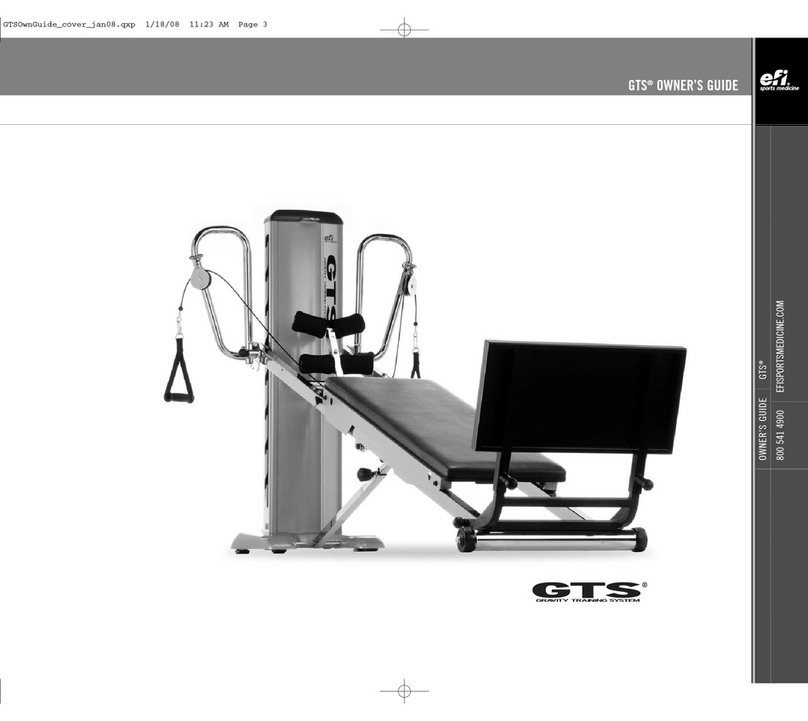
EFI
EFI GTS owner's guide

Comfort Products
Comfort Products BODYEXPRESS TL-VIBE0101 user manual
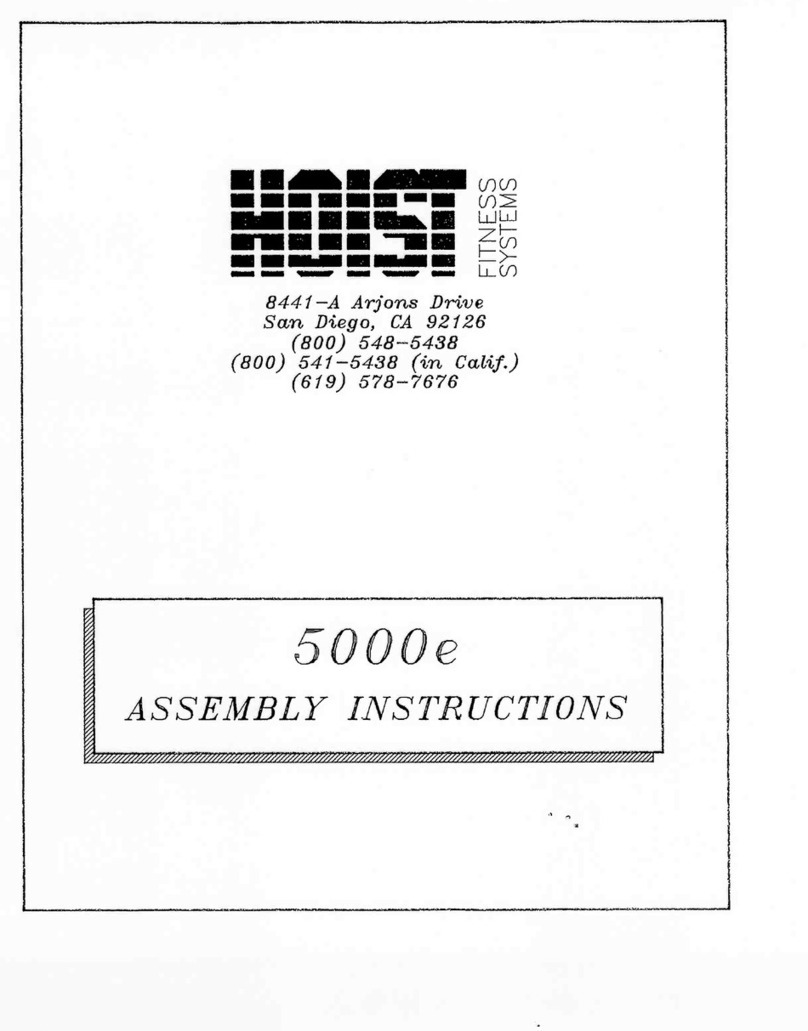
Hoist Fitness
Hoist Fitness 5000e Assembly instructions
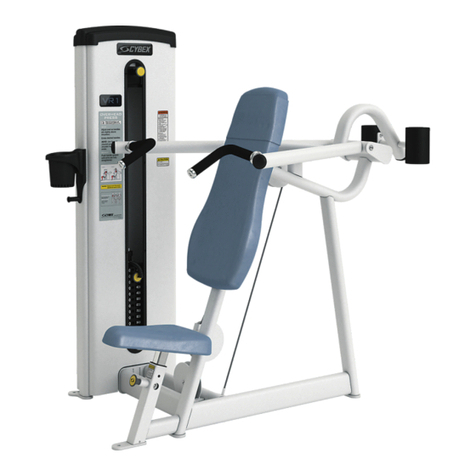
CYBEX
CYBEX VR1 Overhead Press owner's manual
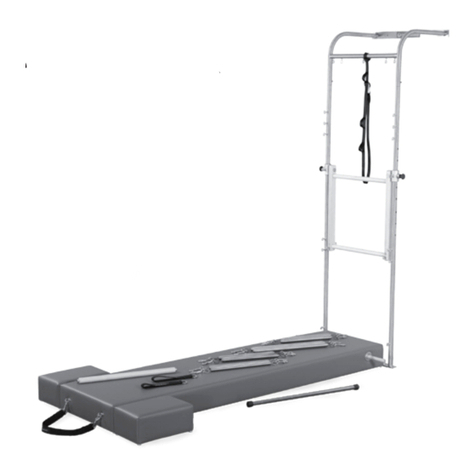
Balanced Body
Balanced Body CenterLine Pole System Assembling manual
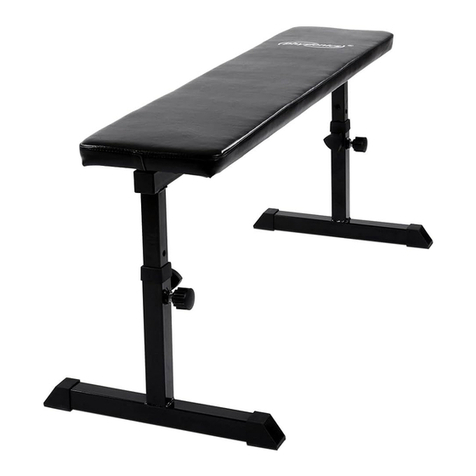
FF Europe
FF Europe HNTLB12 Original instruction manual
